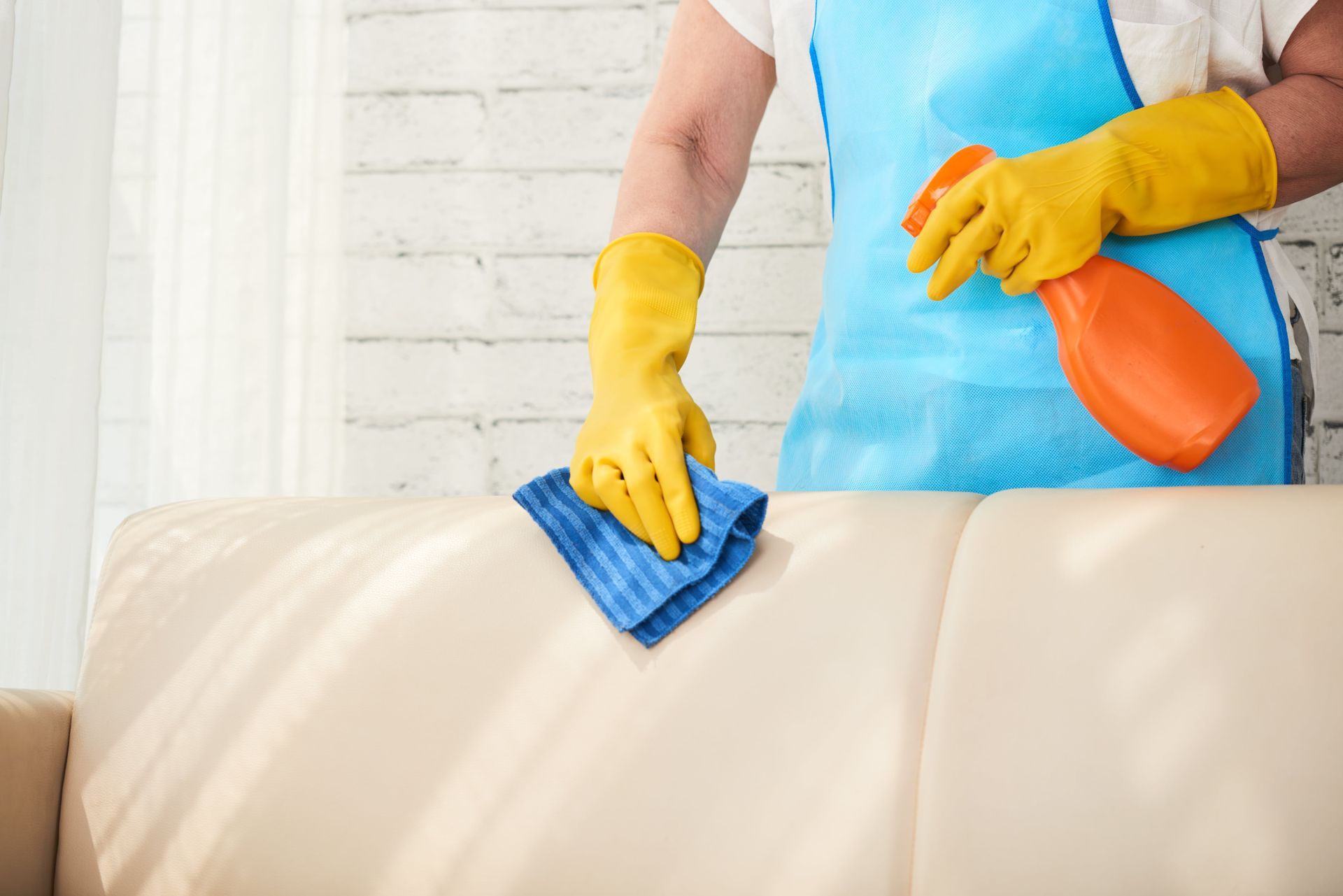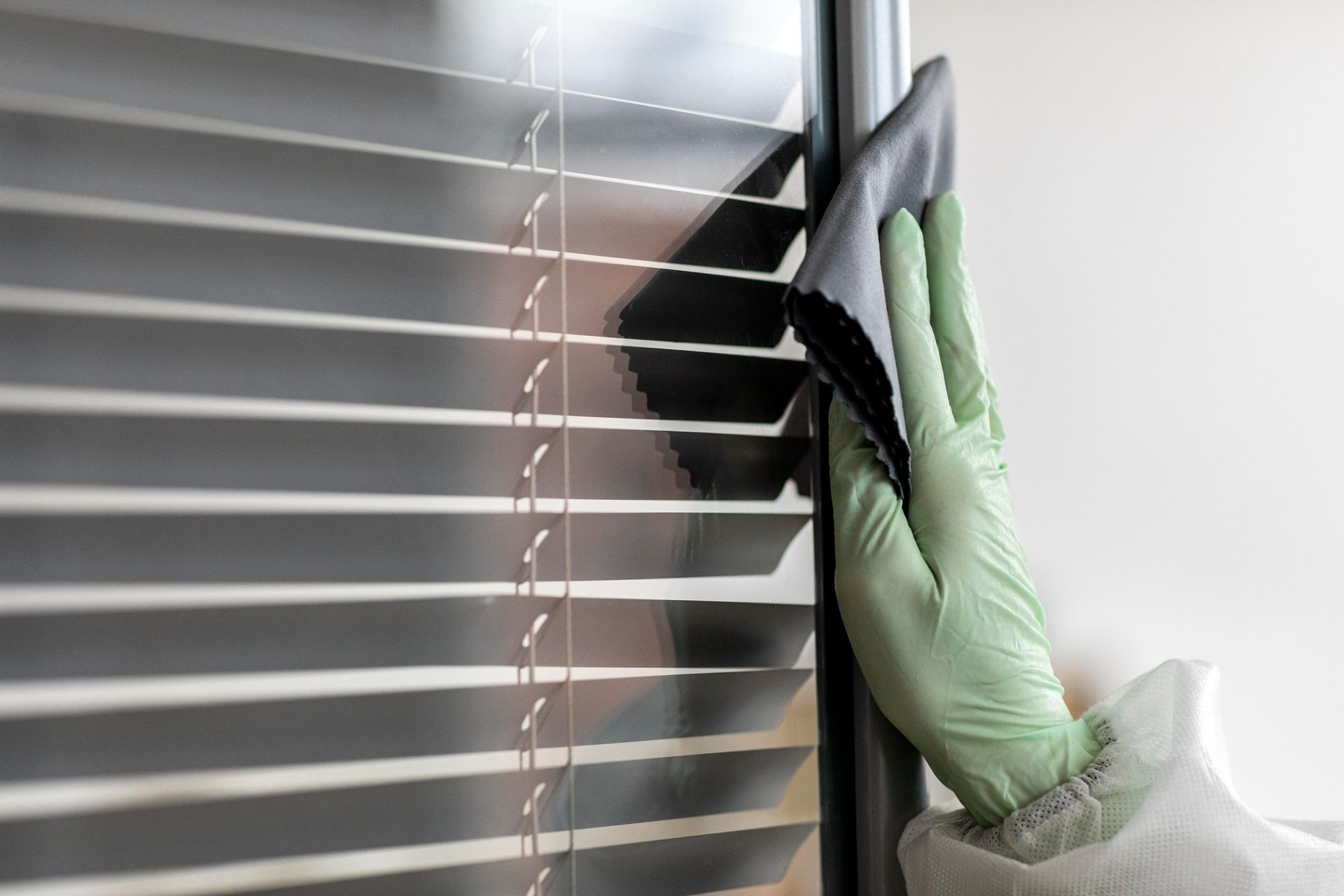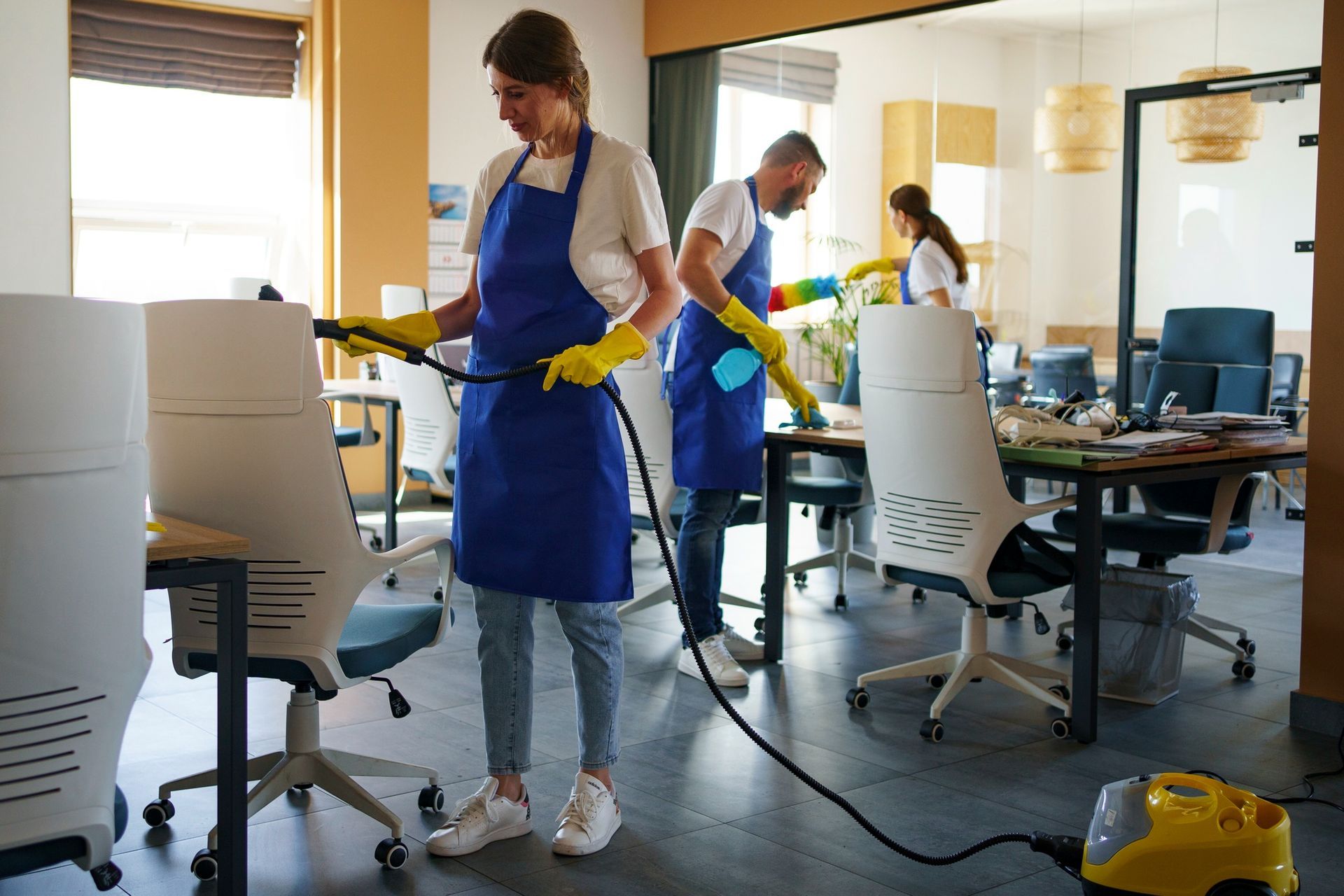How to Develop an Effective Commercial Cleaning Schedule for Your Business
When it comes to running a successful business, cleanliness is often underestimated. A clean and hygienic workplace not only creates a positive impression on customers but also promotes a healthy and productive environment for employees. That's where a well-structured commercial cleaning schedule comes into play. In this comprehensive guide, we will explore the steps to develop an effective commercial cleaning schedule tailored to your business's needs. So, if you're ready to enhance the cleanliness and overall appeal of your workspace, let's dive right into the world of commercial cleaning schedules.
Assessing Your Cleaning Needs
Before you can create a commercial cleaning schedule, you must first understand the unique cleaning needs of your business. Every industry and workplace is different, and what works for one might not work for another. Start by considering the type of business you operate.
Type of Business:
The first step in developing an effective commercial cleaning schedule is to assess the nature of your business. Different industries have varying cleaning requirements. For instance, a medical facility will have different sanitation needs compared to an office or a restaurant. By understanding your specific industry, you can determine the level of cleanliness required to meet industry standards.
High-Traffic Areas:
Identify the high-traffic areas in your workplace. These are the spaces that accumulate the most dirt and germs. It could be the lobby, restrooms, or employee breakrooms. Pay special attention to these areas when creating your cleaning schedule to ensure they receive the necessary attention and maintenance.
Compliance with Industry Regulations:
Many industries have specific regulations and guidelines regarding cleanliness and sanitation. Whether it's healthcare, food service, or manufacturing, adhering to these regulations is crucial for the safety and well-being of your employees and customers. Ensure your cleaning schedule aligns with these requirements to avoid potential legal issues.
Setting Clear Cleaning Objectives
Once you've assessed your cleaning needs, it's time to set clear cleaning objectives. This step involves defining the standards of cleanliness you want to achieve and maintaining consistency in meeting those standards.
Defining Cleanliness Standards:
Start by determining what "clean" means for your business. This definition may vary from one area to another. For instance, restrooms should be spotless, while office spaces may require regular tidying and dusting. Clearly outline your expectations for cleanliness to provide a reference point for your cleaning team.
Determining the Frequency of Cleaning:
Not all areas require the same frequency of cleaning. High-traffic zones may need daily attention, while other areas can be cleaned on a weekly or monthly basis. Assess the traffic and usage patterns in your workplace to determine the appropriate cleaning frequency for each area.
Establishing Specific Goals and Expectations:
Create specific goals and expectations for your cleaning schedule. For example, you may set a goal of reducing dust and allergens in your workspace by a certain percentage within a specific timeframe. By establishing clear objectives, you can measure the effectiveness of your cleaning efforts.
Assembling Your Cleaning Team
Now that you have a clear vision of your cleaning goals, it's time to assemble your cleaning team. You can choose between in-house cleaning staff or outsourcing cleaning services, depending on your budget and preferences.
In-House vs. Outsourcing Cleaning Services:
Decide whether you want to hire an in-house cleaning team or outsource your cleaning needs to a professional cleaning service. In-house staff provides greater control but requires more management. On the other hand, outsourcing can save you time and ensure experienced professionals handle the job.
Hiring and Training Staff:
If you opt for an in-house team, invest in hiring and training. Look for individuals who are detail-oriented, reliable, and committed to maintaining a clean environment. Provide comprehensive training on cleaning techniques, product usage, and safety protocols to ensure your team is equipped for the job.
Implementing Effective Communication Channels:
Establish open lines of communication between your cleaning team and other staff members. Effective communication ensures that cleaning tasks are carried out seamlessly without disrupting daily operations. It's essential for your team to be aware of special events, office hours, and areas that require immediate attention.
Selecting the Right Cleaning Products and Equipment
The effectiveness of your commercial cleaning schedule heavily depends on the cleaning products and equipment you use. Make informed choices to ensure the best results.
Identifying Suitable Cleaning Agents:
Choose cleaning agents that are suitable for your specific cleaning needs. Consider factors such as surface materials, environmental impact, and safety for both employees and customers. Eco-friendly and non-toxic cleaning products are increasingly popular and align with sustainability goals.
Ensuring Equipment Availability and Maintenance:
Ensure that your cleaning team has access to the necessary equipment and tools. Regularly inspect and maintain cleaning equipment to prevent breakdowns that could disrupt your cleaning schedule. Well-maintained equipment also ensures a thorough and efficient cleaning process.
Implementing Eco-Friendly and Safe Options:
Emphasize the use of eco-friendly cleaning products and practices. Not only do these options contribute to a healthier environment, but they also demonstrate your commitment to sustainability, which can be appealing to environmentally conscious customers and employees.
Creating a Comprehensive Cleaning Checklist
With the essentials in place, it's time to create a detailed cleaning checklist. This checklist will serve as a guide for your cleaning team and ensure that no area or task is overlooked.
Room-by-Room Breakdown:
Divide your workspace into specific areas or rooms and create a checklist for each. For example, list the cleaning tasks required in the lobby, conference rooms, restrooms, and break areas separately. This organization will help streamline the cleaning process.
Detailed Cleaning Tasks:
Be specific about the cleaning tasks that need to be completed in each area. Include tasks such as vacuuming, dusting, mopping, sanitizing surfaces, emptying trash bins, and restocking supplies. Providing clear instructions leaves no room for confusion.
Prioritizing Tasks Based on Importance:
Some cleaning tasks may be more critical than others. Prioritize tasks based on their importance to daily operations and hygiene. For instance, cleaning restrooms and common areas should be a top priority to ensure a clean and welcoming environment for customers and employees.
Developing a Cleaning Schedule
Now that you have a comprehensive cleaning checklist, it's time to develop a cleaning schedule that ensures all tasks are completed efficiently and regularly.
Daily, Weekly, and Monthly Cleaning Routines:
Divide your cleaning tasks into daily, weekly, and monthly routines. Daily tasks may include emptying trash and sanitizing high-touch surfaces, while weekly tasks could involve deep cleaning and monthly tasks might encompass equipment maintenance. This tiered approach ensures that all cleaning needs are addressed regularly.
Allocating Time Slots for Each Task:
Assign specific time slots for each cleaning task. For example, designate mornings for restroom cleaning, afternoons for office spaces, and evenings for common areas. This allocation of time ensures that cleaning tasks do not interfere with the regular workflow of your business.
Ensuring Flexibility for Special Events or Emergencies:
Your cleaning schedule should have built-in flexibility to accommodate special events, unexpected messes, or emergencies. Maintain a contingency plan to address unexpected situations without compromising cleanliness.
Implementing Quality Control Measures
Maintaining a consistent level of cleanliness is crucial. Implement quality control measures to ensure your commercial cleaning schedule meets your standards.
Regular Inspections and Audits:
Conduct regular inspections and audits to evaluate the performance of your cleaning team. Schedule surprise visits to ensure tasks are completed as per the checklist. Provide constructive feedback to address any shortcomings promptly.
Feedback and Improvement Mechanisms:
Encourage feedback from both your cleaning team and other staff members. Act on suggestions and concerns to continuously improve your cleaning schedule. Creating an open dialogue fosters a collaborative approach to maintaining cleanliness.
Encouraging Employee Accountability:
Instill a sense of ownership and accountability among your cleaning team. Recognize and reward their efforts to maintain a clean environment. Additionally, make sure all employees understand their role in maintaining cleanliness in shared spaces.
Budgeting for Your Cleaning Schedule
Maintaining a commercial cleaning schedule comes with associated costs. Proper budgeting is essential to ensure you can sustain the level of cleanliness you desire.
Calculating Cleaning Costs:
Calculate the total costs associated with your cleaning schedule, including salaries, cleaning products, equipment maintenance, and any outsourcing expenses. A clear understanding of your budget will help you allocate resources effectively.
Allocating Budget Resources:
Allocate resources to different aspects of your cleaning schedule based on priority. Ensure that you have sufficient funds for essential cleaning products and equipment maintenance. Be prepared to adjust your budget as needed to accommodate unexpected expenses.
Managing Expenses Effectively:
Implement cost-saving measures where possible without compromising the quality of cleaning. Consider bulk purchasing of cleaning supplies, negotiating contracts with cleaning service providers, and optimizing your cleaning team's efficiency to manage expenses effectively.
Adapting to Changing Needs
The business environment is dynamic, and your cleaning schedule should be adaptable to changing needs and circumstances.
Evaluating and Adjusting the Schedule as Necessary:
Periodically evaluate the effectiveness of your cleaning schedule and make necessary adjustments. If you notice areas that require more attention or areas where resources can be reallocated, be willing to modify your schedule accordingly.
Incorporating New Technologies and Methods:
Stay up-to-date with the latest cleaning technologies and methods. New tools and innovations can enhance the efficiency and effectiveness of your cleaning routine. Explore options such as touchless cleaning systems, UV-C sanitation, and smart cleaning solutions.
Staying Up-to-Date with Industry Trends:
Keep an eye on industry trends and best practices in commercial cleaning. Staying informed allows you to proactively implement changes that can improve the cleanliness and hygiene of your workplace.
Ensuring Health and Safety
Last but not least, prioritize the health and safety of your employees and customers by adhering to health and safety regulations.
Compliance with Health and Safety Regulations:
Familiarize yourself with local health and safety regulations that apply to your industry. Ensure that your cleaning practices align with these regulations to protect the well-being of everyone in your workplace.
Providing Proper Training and Protective Gear:
Equip your cleaning team with the necessary training and personal protective equipment (PPE) to ensure their safety. Training should cover safe handling of cleaning chemicals and equipment, as well as protocols for responding to accidents.
Responding to Accidents and Emergencies:
Develop clear procedures for responding to accidents and emergencies related to cleaning. This includes addressing spills, chemical exposures, and other unforeseen situations promptly and effectively.
Conclusion
In conclusion, a well-structured commercial cleaning schedule is essential for maintaining a clean, safe, and productive workplace. By carefully assessing your cleaning needs, setting clear objectives, assembling a dedicated cleaning team, choosing the right products and equipment, and implementing effective quality control measures, you can create a cleaning schedule that enhances the overall appeal of your business.
Remember that a well-maintained workspace not only impresses customers but also promotes the well-being of your employees. So, take action today, develop your customized commercial cleaning schedule, and enjoy the benefits of a cleaner, healthier, and more successful business environment. With the right approach and commitment to cleanliness, your business can thrive.
If you're looking for a reliable commercial cleaning service provider in Linwood, NJ,
Offshore Carpet Cleaning and Janitorial Services stands out as the best choice. You can reach them at
609-365-8045. Their dedicated team and commitment to quality make them the ideal partner in ensuring your workplace remains pristine and inviting.



